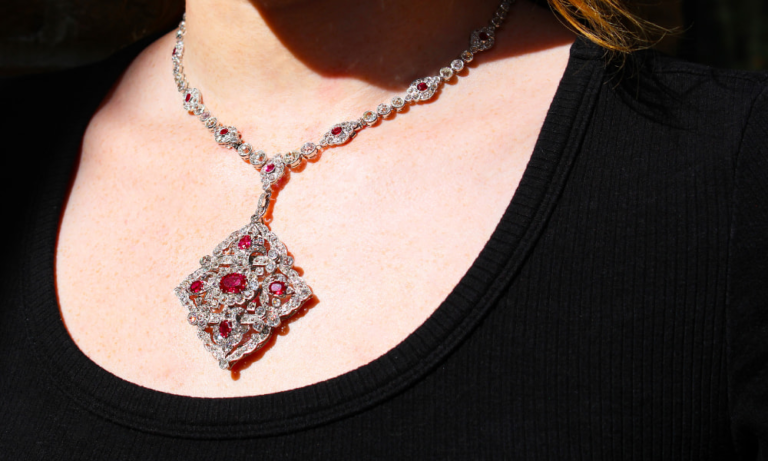Fine jewelry has long been revered as a symbol of sophistication and luxury. From sparkling diamonds to intricate gold designs, these pieces embody artistry, heritage, and a sense of timeless elegance that transcends trends. In this article, we will delve into the world of fine jewelry, exploring its history, craftsmanship, and enduring appeal that continues to captivate collectors and admirers alike.
The History of Fine Jewellery
Ancient Origins
The origins of jewelry can be traced back thousands of years, with the earliest forms being made from natural materials such as shells, bones, and stones. As societies evolved, so did the materials and techniques used in jewelry making. Ancient civilizations, including the Egyptians, Greeks, and Romans, began crafting intricate pieces from precious metals and gemstones, often imbuing them with significant cultural and spiritual meanings. For instance, Egyptians adorned themselves with gold and lapis lazuli, believing these materials to possess protective properties.
The Middle Ages to the Renaissance
During the Middle Ages, jewelry became a symbol of status and wealth, often worn by nobility and royalty. The Renaissance period saw a resurgence of interest in art and culture, leading to innovative jewelry designs that incorporated enamel work and intricate gem settings. This era marked the beginning of fine jewelry as we know it today, with skilled artisans creating bespoke pieces that reflected the individual tastes of their patrons.
Modern Developments
In the 19th and 20th centuries, the introduction of new technologies and the discovery of new gemstones transformed the jewelry industry. Art Nouveau and Art Deco movements brought unique aesthetics and design philosophies to the forefront, celebrating natural forms and geometric shapes. Today, fine jewelry continues to evolve, blending traditional craftsmanship with contemporary design, resulting in pieces that are both timeless and modern.
The Craftsmanship Behind Fine Jewellery
Artisan Techniques
Fine Famous online jewelry is characterized by meticulous craftsmanship and attention to detail. Skilled artisans employ various techniques to create each piece, ensuring that it meets the highest standards of quality. From hand-drawing designs to hand-setting gemstones, every step requires precision and expertise. Techniques such as engraving, filigree, and granulation are often used to enhance the aesthetic appeal of jewelry.
Quality of Materials
The materials used in fine jewelry significantly contribute to its elegance and longevity. High-quality metals like gold, platinum, and silver are preferred for their durability and lustrous finish. Additionally, fine jewelry often incorporates gemstones that are carefully selected for their clarity, color, and cut. The brilliance of a diamond, the deep hue of a sapphire, or the vibrant green of an emerald can elevate a piece from ordinary to extraordinary.
Ethical Considerations
As awareness of ethical sourcing grows, many fine jewelry brands are committing to sustainable practices. This includes sourcing conflict-free gemstones and using recycled metals to minimize environmental impact. Consumers are increasingly drawn to brands that prioritize ethical production, seeking pieces that not only exude beauty but also align with their values.
The Allure of Fine Jewellery
A Symbol of Love and Commitment
Fine jewelry often plays a significant role in marking important life events, such as engagements, weddings, and anniversaries. The timelessness of these pieces makes them ideal tokens of love and commitment, passed down through generations as cherished heirlooms. A diamond engagement ring, for example, symbolizes enduring love, while a pair of pearl earrings can signify sophistication and grace.
Versatility in Style
One of the defining features of fine jewelry is its versatility. Whether it’s a classic strand of pearls, a statement cocktail ring, or a delicate pendant necklace, fine jewelry can enhance any outfit, from casual to formal. The ability to layer and stack different pieces allows individuals to express their style and creativity. Additionally, the timeless nature of these designs ensures they remain relevant regardless of changing fashion trends.
Investment Value
Fine jewelry is not just a fashion accessory; it is also a worthwhile investment. Many pieces appreciate over time, making them not only beautiful additions to a collection but also smart financial choices. Rare gemstones, vintage designs, and works by renowned artisans can fetch significant sums at auctions, further solidifying the status of fine jewelry as a valuable asset.
Conclusion
The allure of fine jewelry lies in its ability to combine artistry, history, and elegance. As we explore the intricate designs and craftsmanship behind these timeless pieces, we gain a deeper appreciation for their significance in our lives. Whether worn for special occasions or cherished as heirlooms, fine jewelry continues to captivate hearts and inspire admiration. Its enduring appeal serves as a testament to the artistry and skill that have shaped this remarkable industry for centuries, ensuring that fine jewelry will remain a symbol of elegance for generations to come.

